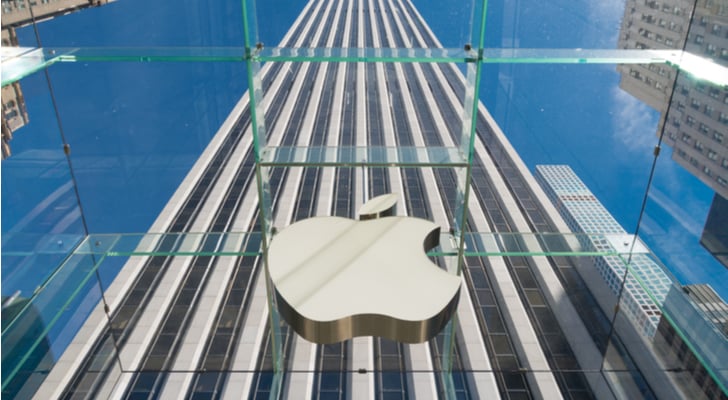Consumer technology giant Apple Inc. (NASDAQ:AAPL) is looking to shake things up just a bit at least inside some of its wares. That’s the word from Bloomberg anyway, which reported on Monday that by 2020 the company would stop using certain Intel Corporation (NASDAQ:INTC) chips in Mac computers. Apple stock didn’t move much on the news.
Clearly INTC owners were spooked on a day that was already miserable for investors. Trade war fears sent the broad market to one of its worst losses in weeks.
Thing is, while the headlines are splashy, this isn’t a big deal. Unless it is.
Strategic Move for Apple Stock
The advantage of doing more of its design work in-house is clear. It not only puts Apple in charge of its own product development timeline, it allows the company to build machines that do exactly what it wants. Apple no longer will be limited by Intel’s processors’ architecture.
Cross Research analyst Shannon Cross explained:
“We think that Apple is looking at ways to further integrate their hardware and software platforms, and they’ve clearly made some moves in this space, trying to integrate iOS and macOS. It makes sense that they’re going in this direction. If you look at incremental R&D spend, it’s gone into ways to try to vertically integrate their components so they can add more functionality for competitive differentiation.”
The fiscal benefit to Apple, and to Apple stock, isn’t as clear as the technological one, but the impact on Intel is relatively finite, and modest. Apple owns less than 8% of the desktop computer market, and Apple was only responsible for about 4% of Intel’s revenue last year and less than one percent of Intel’s 2017 profits.
And while other computer makers like Dell or HP Inc
(NYSE:HPQ) could theoretically follow Apple’s lead and do the same, Stifel analyst Kevin Cassidy opined, “We do not expect any other PC manufacturers will consider designing its own CPUs.”
Notice the Pattern
While Apple stock holders mostly acknowledged the development and then moved on, there may be more to the matter than just the news of Intel’s displacement. This is part of a bigger interest Apple has been showing in relying less on other suppliers, and more on its own R&D.
If the idea seems vaguely familiar, there’s a reason.
In early 2017, rumors first surfaced that Apple was mulling a future with fewer Intel processor chips on board. At the time, it was suggested that one Mac model and two Mac laptop models with home-grown processors would become available by the end of that year. Though the company didn’t reach that goal, that doesn’t mean it’s still not trying.
Then a year ago, almost to the day, the market first got wind that Apple might be looking to build its own power-management chip for the iPhone. Shares of UK-based Dialog Semiconductor, which at the time made the power-management chip for Apple, fell sharply in the wake of that report.
The idea was reprised in September of last year, when the iPhone X was released with an A11 processor inside. The A11, though is made by Taiwan Semiconductor Mfg. Co. Ltd. (ADR) (NYSE:TSM), is designed by Apple. While it wasn’t the first Apple-deigned chip to make its way into an Apple product, the company has become increasingly comfortable with the idea.
The end goal of all the home-grown technology may be to make iPhones run more like Macs, and make Macs run more like iPhones. More importantly, future operating systems found on its computers as well as its mobile devices could be able to run the exact same apps.
Looking Ahead for Apple Stock
While it would be overstating things to call the development a game-changer (Apple was doing pretty well already), it could fan the bullish flames by making Apple’s user ecosystem even easier and more flexible to use.
Android computers are relatively unpopular, and don’t “play well” with Android phones. Windows is still the world’s most popular computer operating system, but Windows phones are no longer being made.
If Apple can successfully meld a mobile device and less-mobile laptops and immobile desktops, consumers may well find a reason to own both kinds of Apple’s wares. That just might be the boost Apple needs as smartphone saturation moves in sight at the same time Mac market share is being pressured.
There’s also the not-so-small matter that it’s just cheaper for Apple to make its own processors rather than buy them from Intel.
As of this writing, James Brumley did not hold a position in any of the aforementioned securities. You can follow him on Twitter, at @jbrumley.

